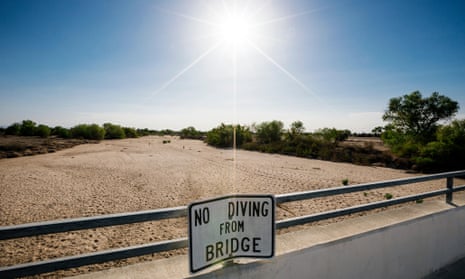The recent World Economic Forum Global Risks report identifies the 10 “biggest threats to the stability of the world” over the next 10 years. These are difficult times, and the catalogue of potential threats includes many that may seem familiar, including high unemployment, war and the spread of infectious disease. It is particularly telling, therefore, given the dangers confronting us, that the report points to water crises as one of the top global risks.
Competition for increasingly scarce water resources is already a real and compelling issue, impacting economies and societies in both the developing and developed world. Shortages are localised, which can create an immediate impact on communities, but also have the potential to have truly global consequences.
The US has a significant influence on the global food trade, from essential cereal crops to fruits and nuts. Indeed, the US accounts for 32% of global corn production and 31% of global soybean production (pdf) – both vital staples. As a result, the ongoing water crisis in California – the country’s largest agricultural producer – may threaten the price and availability of certain commodities worldwide.
The situation is exacerbated, globally and in the US, by intensified competition between agriculture and industry. Driven by population growth, urbanisation and climate change, power generators, chemical producers and oil and gas fields are increasingly in a rivalry with agricultural lands over finite freshwater resources.
Electric power generation in particular is both highly dependent on the local availability of freshwater and extremely water intensive (pdf). On average, research from MSCI ESG has demonstrated that electric utilities consume 11 times more water than all other industries combined.
At the same time, industrial water users typically have a higher capacity to absorb the increased costs associated with rising water prices in comparison to agricultural water users, threatening an impact on crop production and yield if farmers are priced out of the market.
The stress on water resources is already considerable. Within the US, 18% of harvested cropland is irrigated (pdf), most of which is attributed to corn, soy, wheat and hay, but also includes water-intensive crops such as sugar beets, sugar cane, rice and cotton. Some 412 irrigation-intensive US counties are currently facing moderate to high levels of water stress – around 23% of total US land area.
Nevertheless, according to our research, approximately one-third of publicly traded US electric utilities – including Xcel Energy, Exelon, Pinnacle West Capital and Calpine – derive more than 10% of their electric power generation from already water stressed regions. One in every four publicly traded US electric utilities operate in counties that are both water stressed and irrigation intensive.
We have seen a number of cases in which low water levels and high temperatures compounded into production disruptions. In 2010, Tennessee Valley Authority’s Browns Ferry nuclear power plant in Alabama was forced to reduce generation to 40-60% of normal operating capacity for 45 days during the summer. Similar events occurred during France’s record-breaking heat waves during 2003 and 2007. These challenges are only likely to intensify, especially for companies that are reliant on water-intensive coal and nuclear power sources in irrigation-intensive regions.
Similarly, an estimated $1.2bn (£790m) in maize, soy and wheat crops may be at risk in US states where competition with industrial water users is high. As a percentage of total production, this is relatively small (between 0.2% and 1.2% of the total harvest), but the problem is expanding to other crops. For example, MSCI ESG Research has shown that for regional crops like cotton and sugar beet, the percentage of exposed acreage is up to six times higher as key growing areas such as North Dakota, Texas and California are experiencing water-intensive oil and gas booms.
In the US, if the situation remains as it is today, the competition for water resources may reach a tipping point that results in stranded assets, reduced productivity, and increased tensions between farmers and industry. In the medium term, policymakers may need to dictate water allocation priorities.
As the World Economic Forum’s report reminds us, however, dealing with issues of water scarcity will be a global challenge, one that faces us now, and a problem that will be with us for the foreseeable future.
The water hub is funded by Grundfos. All content is editorially independent except for pieces labelled ‘brought to you by’. Find out more here.
This content is brought to you by Guardian Professional. Become a GSB member to get more stories like this direct to your inbox.

Comments (…)
Sign in or create your Guardian account to join the discussion